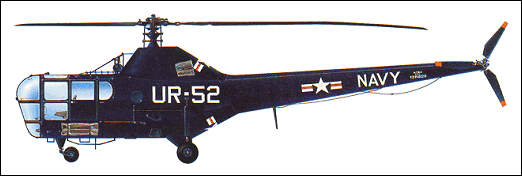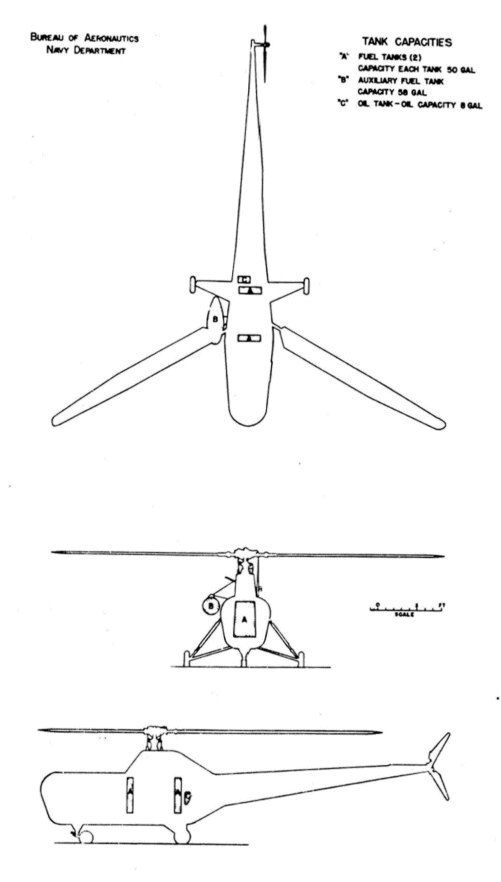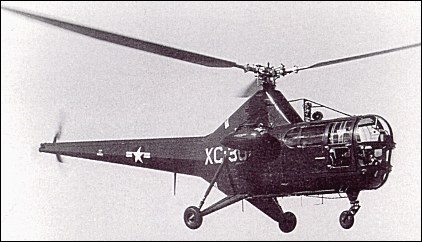
Sikorsky H-5/S-51

 |
 |
 |
| This photograph may not be used or published, neither commercially nor for other purposes, in any form, including but not restricting to the Internet, magazines and books, without the photographer's permission. For all inquiries please contact the photographer by e-mail or by other means. |
|
The first helicopter to be assigned to NAS Grossse Ile and was only there long enough for its first inspection and then was replaced by the Hiller HTE. They were built in large numbers was a derivative of the Sikorsky R-5, which started out as a tandem two-seater. The first of five prototypes flew on 18 August 1943 powered by a 450hp Wasp Junior radial. This was followed by 25 YR-5A pre-production models, two of which were assigned to the Navy under the designation HO2S-1. While production of the R-5A was getting under way (34 built), five pre-series aircraft were converted into the R-5E, which had dual control, while at least 20 modified R-5As were later given new, 600hp Wasp Junior engines and redesignated R-5D. From the latter, the S-51 was developed, with a slightly enlarged four-seat cabin and a tricycle landing gear. A total of 300 S-51s were built, some with 450hp engines,
others with 600hp engines and larger diameter three-blade rotors. The military
versions were designated R-5F (11 to the USAF), H-5G (38 fitted with a rescue
hoist), H-5H (17 with amphibious wheel/pontoon landing gear), HO3S-1 and S2 (90
in all, naval rescue version). The S-51 had a three-blade articulated rotor, the
blades of which could be folded back to facilitate stowage. The first aircraft
had manual pitch control; this was later replaced by a hydraulic system. The
cabin diameter was also increased. |
|
|||||||||||||||||||||||||||||||||||||||||||||||||
Copyright © 2005NASGIVM All rights reserved.
Revised: December 22, 2005